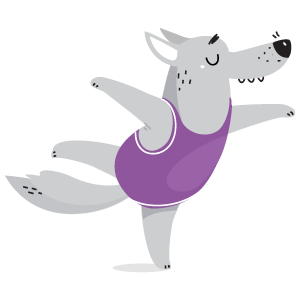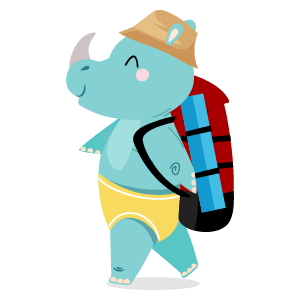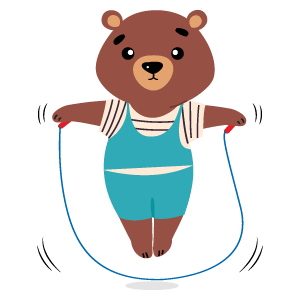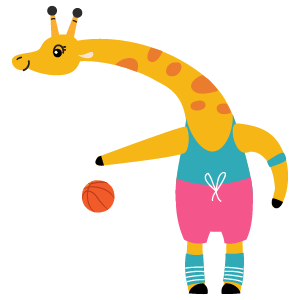Healthy Living
5 Tips From the Animal Kingdom: Building Strong Bones
The human skeleton isn’t so different from animals, after all! It shares many functional and structural similarities with vertebrates like cattle, birds, fish or snakes. Look at the skull that shields the brain or the spine, protecting the spinal cord and nerves. But here’s the deal– bones must be nourished and trained to perform their best, regardless of whether we’re humans or animals.
Imagine a future where your bones are strong and healthy, and every step you take is confident and pain-free. Optimal bone health may be within reach if you start with healthy habits and preventive measures to help build strong bones. Read on for tips on how to keep your bones in good shape.
Bone Appétit! Nutrients for Bone Health
Did you know giraffes get the calcium and phosphorus needed for their skeletons by chewing on bones and antlers? This behavior is called osteophagy, which scientists observe in some herbivores, domestic animals and grizzly bears.
The human body cannot make calcium and phosphorus, so these nutrients must come from supplements or food. Phosphorus and calcium work together to build strong bones and teeth. High-calcium foods include:
- Dairy (cheese, milk, yogurt, etc.)
- Leafy greens (spinach, kale, broccoli, etc.)
- Canned seafood with bones (salmon, cod, sardines, etc.)
- Soy foods (soybeans, tofu, etc.)
On the other hand, phosphorus can come from:
- Dairy products
- Meat, fish and poultry
- Grains, nuts, legumes and veggies
Vitamin D is another nutrient that can help the body effectively absorb and regulate calcium. While our body can make its vitamin D through sun exposure, a safer way to get this nutrient is to consume foods such as canned light tuna, salmon and fortified foods and drinks.
All in all, nothing beats a balanced diet that incorporates a variety of healthy fats, lean proteins, whole grains, fruits and vegetables. Together, they provide the building blocks for strong bones and the nutrients you need for overall health.
Get Moving!
Keep your bones in tip-top shape through regular exercise. Exercise can help your bones become stronger and denser, not to mention you’re also improving your balance and coordination in the process, helping you prevent falls or trips.
Brisk walking 30 minutes daily, three or more times a week, is a great starting point to help prevent bone loss. Weight-bearing exercises and strength training are two exercise types that can be most effective for building strong bones, such as:
 Dancing Dancing |
 Hiking |
 Jogging Jogging |
 Jumping Rope Jumping Rope |
 Running |
 Physical Sports |
 Stair Climbing |
Ditch Bone-Damaging Habits
If you haven’t, quit smoking and limit alcohol consumption. Smoking may lead to lower bone mass and bone mineral density (BMD), a measure of calcium and other minerals in bone. Bones with more minerals are denser, making them stronger and less likely to fracture.
A study published by the National Library of Medicine found that excess alcohol consumption may affect the body’s ability to absorb key nutrients for bone health, such as vitamin D and calcium. It may also decrease testosterone (in males) and estrogen (in females) levels, hormones linked to bone formation.
Beware of Some Meds
Consult with your doctor about the medications and supplements you’re taking, as certain drugs can cause bone loss and contribute to osteoporosis if used long-term. Healthcare providers may help monitor your bone health, supplement your intake of vitamin D and calcium, recommend alternatives and initiate other treatments or programs if needed.
Fall-Proof Your Home
Falling can cause a fracture (broken bone) and make it difficult to do daily activities. Take the following precautionary measures to minimize the risk of falls or slips in your home:
- Opt for non-skid mats
- Keep your home well lit
- Install handrails on stairs
- Wear appropriate footwear
- Ensure mats are firmly fixed on the floor
- Move furniture out of paths where you walk
- Remove objects that may cause you to trip over
- Keep your regularly used items at a level that is easy for you to reach
- Watch out for raised steps or doorways and slippery, wet surfaces
Caring for your bones pays off, so embrace healthy habits to grant your body the strength it deserves for a vibrant and active future. Bone voyage!
Sources:
American Bone Health
Biomed Central
Bone Healthy & Osteoporosis Foundation
Frontiers for Young Minds
Healthline
International Osteoporosis Foundation
Medline
Michigan State University Extension
National Geographic
National Institute of Arthritis and Musculoskeletal and Skin Diseases
National Institute of Health
National Library of Medicine
OrthoInfo
Research Gate
Science Direct
The American Association of Retired Persons


